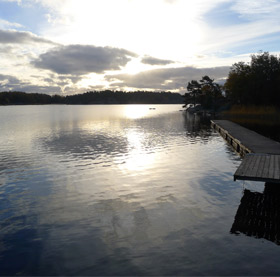Evaluation of phosphorus that contributes to eutrophication
To find strong measures against phosphorus inputs to the Baltic Sea, it is important to know what type of phosphorus that reaches the sea and where it comes from. With support from BalticSea2020 Uppsala University will analyze phosphorus from agricultural and forest areas to sort out which of these contributes to eutrophication in the Baltic Sea.
In Sweden, phosphorus losses from agricultural are over 20% of the total phosphorus contribution to lakes and streams. From forets solis the losses is expected to be larger, almost 40%. Together, these areas represent a large part of the phosphorus reaching the Baltic Sea. But the majority is buried in the bottoms without contributing to eutrophication. Instead, it is only a small proportion of the phosphorus, depending on source, which becomes available for phytoplankton and thus contributes to eutrophication.
Aims and objectives
To find out the extent of phosphorus inputs from agricultural and forest that contributes to the eutrophication of the Baltic Sea, this project will identify the phosphorus compounds that come from the different areas. Expectations are that the collective knowledge contributes to more targeted, effective and cost-effective measures.
Method
The project is implemented in the Björnöfjärden bay (Björnöfjärden, Säbyviken and Torpe-Infjärden) on Ingarö in Värmdö (Stockholm, Sweden). In the spring of 2014 samples from the woods and fields in Säbyviken, and sediment from Säbyviken was collected. The organic phosphorus in these samples will be analyzed. Sampling and analysis will continue in the rest of the year to compare the phosphorus losses during different seasons.
The project started in May 2014 and will run for approximately two years.

Project status
PROJECT MANAGER
Per Sjöberg, Department of Chemistry, Uppsala University







